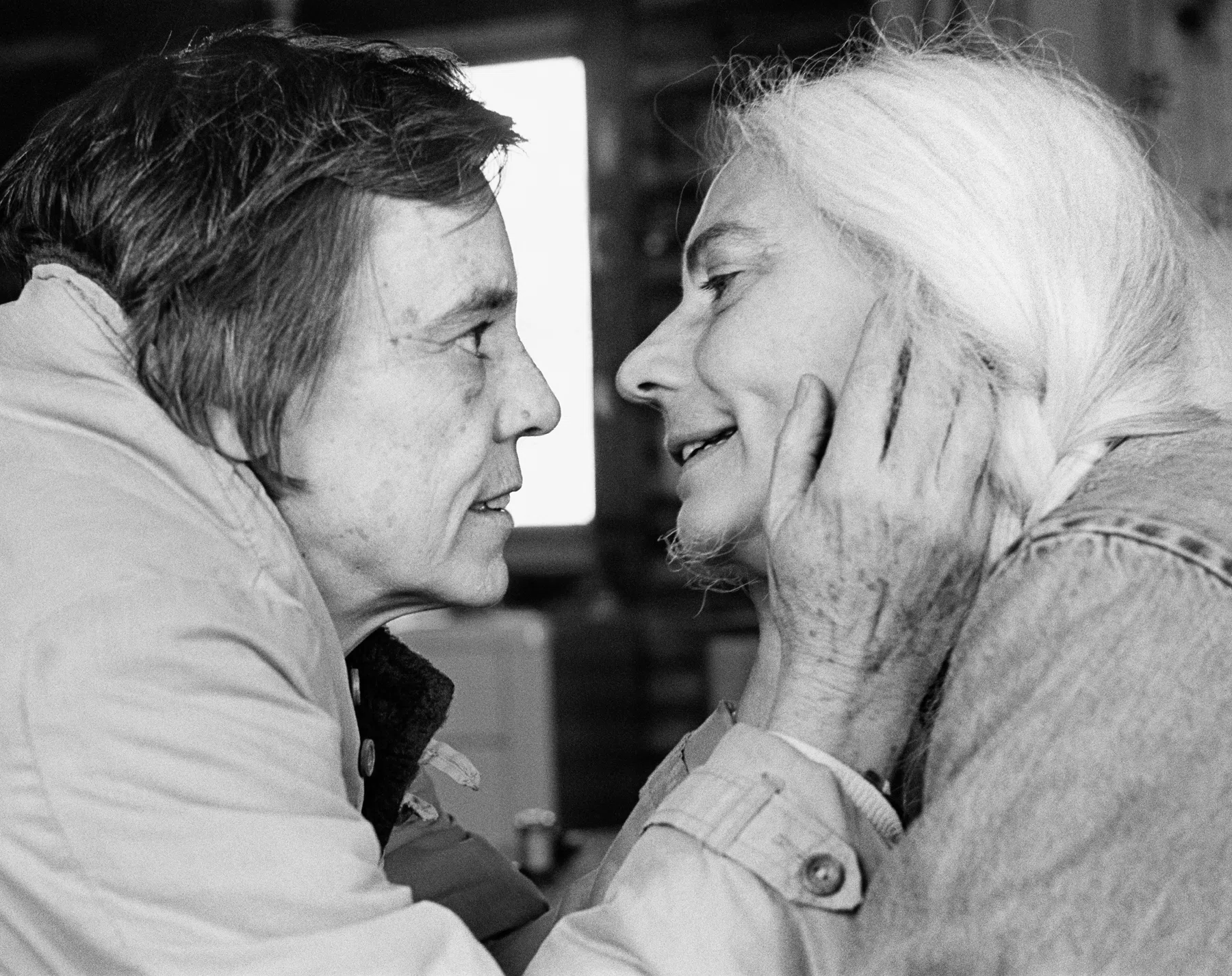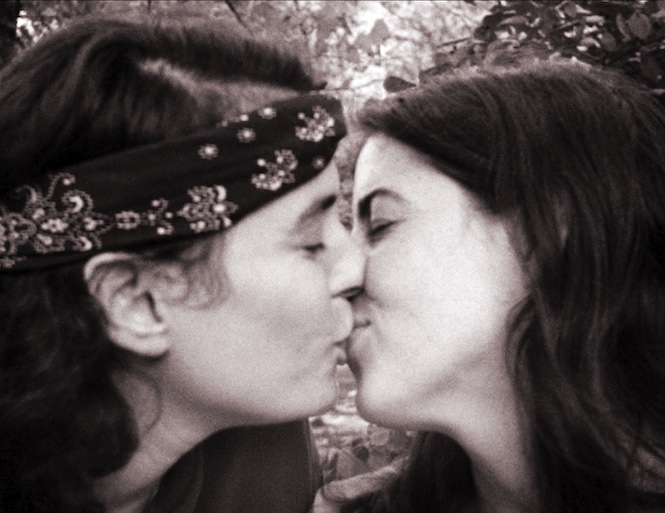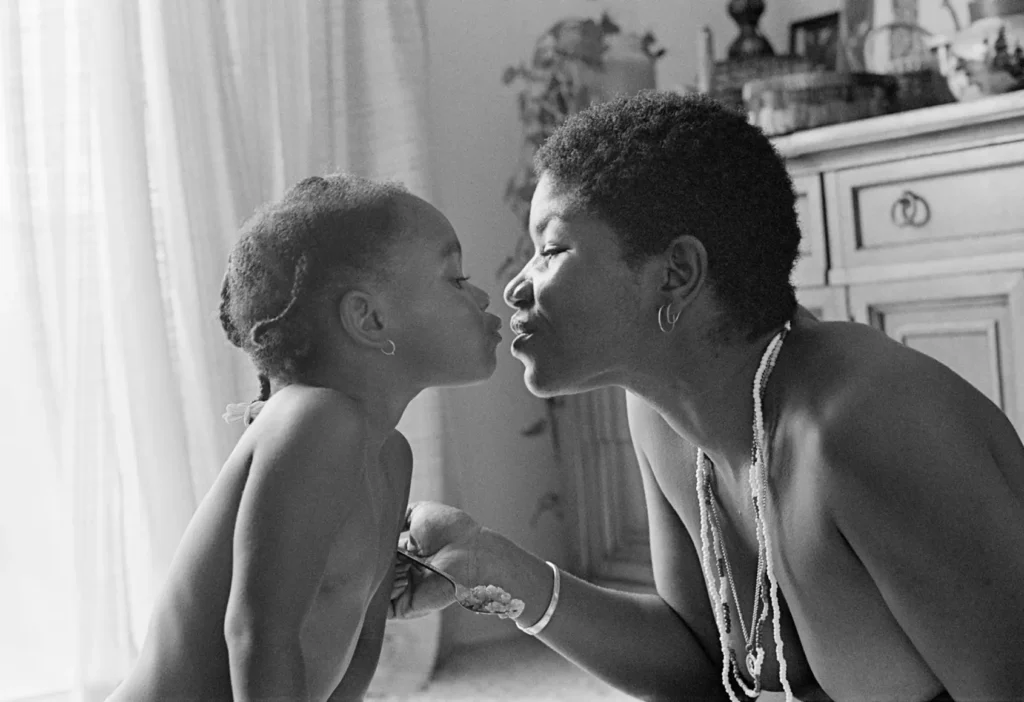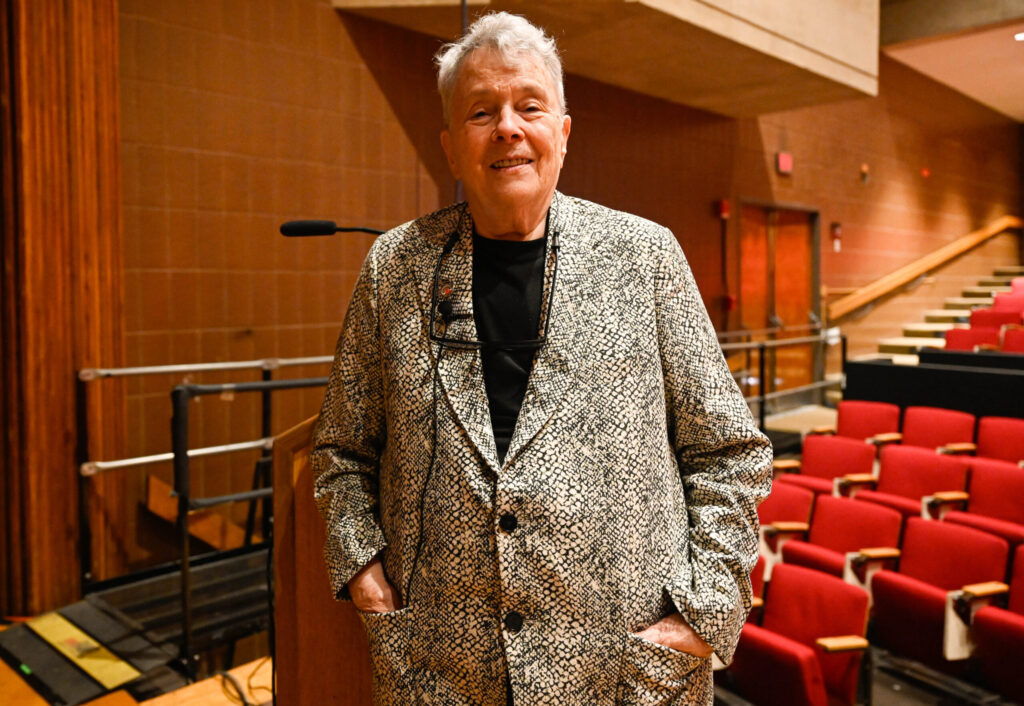Making the image: A lesbian photographer’s journey with time

Joan “JEB” E. Biren’s identity as a photographer was not born from passion, but out of deep necessity to see herself reflected in art. It was the late ‘60s, and lesbian identity in the mainstream was left to a harmful narration by straight men, simply to aid their fantasy. Real lesbian narratives, however, didn’t exist in the tale of history accessible to JEB.
“I wanted to see pictures of lesbians that looked like me or my friends and lovers, and I honestly could not find any,” the now 80-year-old said at MassArt in early April, where she spoke for the college’s Spring 2025 photo lecture series.
JEB’s first ever photograph was made on a borrowed camera in 1970, an image she called an “early selfie,” which showed JEB and her lover Sharon sharing a kiss.

Photography is an art form that is often left out of the conversation surrounding the “indie sphere,” but artists like JEB embody the independent spirit by documenting their community for the love of it and nothing else, without the instant gratification of prestige or monetary reward.
This documentation is the antidote to the false narratives of history that have once more come to the forefront of American politics. At MassArt, JEB expanded on her usual speech to address the dangers of the new administration, because she believes “the times demand it.” The tricks and turns of time, as it turned out, would be a major theme in her life.
On March 27, 2025, President Donald Trump signed an executive order called “Restoring Truth and Sanity to American History,” which directly targets the Smithsonian Institution, the world’s largest museum, known for its diverse and multicultural exhibits of American history—including JEB’s work.
The order claims that institutions like the Smithsonian falsely reconstruct the nation’s legacy as “inherently racist, sexist, oppressive, or otherwise irredeemably flawed.” Those who control our history hold the keys to our future. If the songs of historically excluded groups are wiped from history, will they ever have the chance to be heard?
Marginalized communities must continue to narrate their own identity. “Representational justice,” which is what JEB calls her work, is the ability for all people to have access to materials that accurately portray their experiences. JEB knew that the justice of visibility was not something that would ever be given to her, so she chose to create it herself.

Throughout the ‘70s she traveled the United States, primarily taking portrait style pictures of lesbians on black and white film, and developing her identity as an artist with a distinct philosophy. By 1979 she had put together her first book, “Eye to Eye: Portraits of Lesbians.”
Decades after its publication, in their ongoing exhibition “The Struggle for Justice,” the Smithsonian calls JEB’s first book a “landmark publication,” but JEB said when she first made it nobody would publish it. She originally self-published the book by raising money from the lesbian community, eager to support what would become the world’s first openly lesbian photography book.
Finally, in 2021, Anthology, an independent publisher in New York, approached JEB about reissuing Eye to Eye, which had been out of print for 40 years. The first print run of the reissued book sold out in a matter of months, reaching people both inside and out of the lesbian community.
“I was totally blown away by how much attention it got from young people and straight people all over the world,” JEB said. The collection she had started to see herself, had found a new home throughout multiple generations. Her second photography book, “Making a Way: Lesbians Out Front,” is being republished this year and will be available in July.
Rising popularity doesn’t always have to revoke indie status. The independent label will remain tethered to photographers like JEB, upheld by the ethics behind their productions, ties to their communities, and the gift they offer to the world. JEB refers to the daring women who let themselves be photographed, knowing their faces would be underscored with the lesbian label, not as her subjects, but her muses. Her tradition of shooting on 35mm film, where one roll only made 36 images, meant every click of the shutter had a purpose and every developed picture a well thought out intention.
“I could have never imagined that [my book] would ever be called anything [like a landmark publication] on a wall,” JEB said. “If people don’t care, just keep doing your work because you know that your work is meaningful.”
55 years ago, JEB learned that a picture’s relevance and purpose is not hers to dictate, and that it will continue to change with time. Today, having earned recognition after decades of hard work, the walls of great American institutions like the Smithsonian may, once more, be void of artists like her.

“Before you can go out of the house, you have to know in your mind what you are trying to do,” JEB said. “Why do you want that image? What are you going to do with that image?”
JEB said she’s never taken anyone’s picture. To her, a photograph is a collaborative effort between photographer, muse and viewer. It is through the joining of those three elements, as well as deep intention and regard for impact, that an image is made.
Regions: Boston
